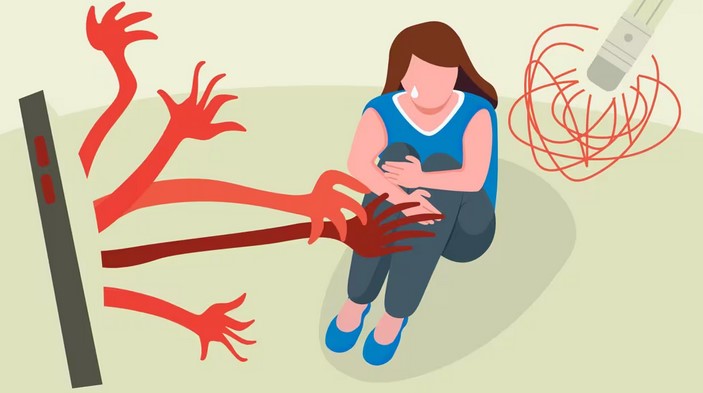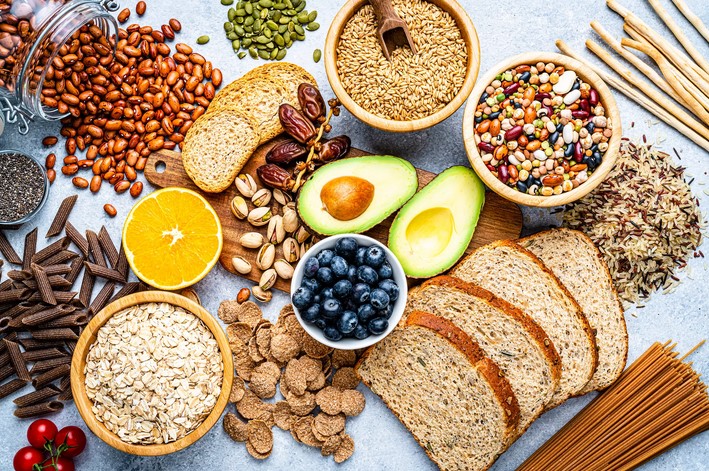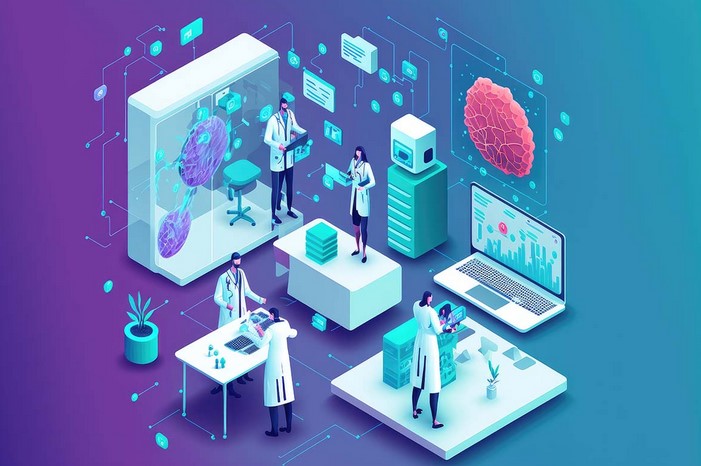
Sleep Apnea is a common yet serious sleep disorder that affects millions of people worldwide. It is characterized by repeated interruptions in breathing during sleep, which can result in fragmented sleep patterns and reduced oxygen levels in the blood. If left untreated, sleep apnea can lead to a host of serious health complications, including heart disease, high blood pressure, and even stroke. In this article, we will explore the symptoms of Sleep Apnea, the types of the condition, and the treatment options available for those who suffer from it.
1. What Is Sleep Apnea?
Sleep Apnea occurs when a person’s airway becomes partially or completely blocked during sleep, preventing normal breathing. These breathing pauses can last for several seconds to minutes and may occur hundreds of times throughout the night, often without the person realizing it. As a result, the person may experience restless sleep and wake up feeling fatigued, even after a full night’s rest.
There are three primary types of Sleep Apnea:
- Obstructive Sleep Apnea (OSA): This is the most common type of Sleep Apnea. It occurs when the muscles in the throat relax excessively during sleep, blocking the airway.
- Central Sleep Apnea: Unlike OSA, central sleep apnea is caused by a failure of the brain to signal the muscles responsible for breathing. This type is less common but can be more dangerous.
- Complex Sleep Apnea Syndrome: This is a combination of both obstructive and central sleep apnea.
While the causes of Sleep Apnea vary depending on the type, the impact on overall health can be significant. For example, obstructive sleep apnea is most commonly seen in overweight individuals due to the extra tissue around the neck that can block the airway, but it can also affect those without obesity.
1.1. The Connection Between Sleep Apnea and Health Risks
Untreated Sleep Apnea can lead to severe health risks, including:
- Cardiovascular Issues: The repeated drops in blood oxygen levels during sleep can strain the heart, leading to high blood pressure, irregular heartbeats, and an increased risk of heart disease.
- Daytime Fatigue and Impaired Functioning: The disruption of deep sleep cycles can result in chronic fatigue, poor concentration, and decreased cognitive function during the day. This can affect work performance and increase the risk of accidents.
- Stroke and Diabetes: There is an association between untreated sleep apnea and a higher likelihood of stroke and type 2 diabetes, as the condition can disrupt normal metabolic processes and increase stress on the body.
- Mental Health Concerns: Sleep deprivation caused by sleep apnea is linked to depression, anxiety, and other mental health issues, due to the toll it takes on the nervous system.
2. Common Symptoms of Sleep Apnea
Recognizing the symptoms of Sleep Apnea is the first step in seeking treatment. Because many of the symptoms occur during sleep, individuals with Sleep Apnea may not always be aware of the problem. Common signs and symptoms of Sleep Apnea include:
2.1. Loud Snoring and Breathing Pauses
Snoring is one of the most common signs of Sleep Apnea. However, not everyone who snores has Sleep Apnea. The distinguishing feature of Sleep Apnea-related snoring is the pattern of loud snoring followed by periods of silence, which are usually the result of a breathing pause. These pauses are often noticed by a bed partner, who may hear the person gasping or choking as they resume breathing.
2.2. Excessive Daytime Sleepiness
People with Sleep Apnea often feel excessively sleepy during the day, despite seemingly getting enough sleep at night. This is because the repeated interruptions in breathing prevent the person from reaching the deeper, restorative stages of sleep. As a result, they may feel fatigued, have difficulty concentrating, and experience memory problems.
2.3. Morning Headaches and Dry Mouth
Many people with Sleep Apnea wake up with a headache or dry mouth due to the shallow breathing and oxygen deprivation during the night. These symptoms are often exacerbated by mouth breathing, which is common in individuals with blocked airways.
2.4. Irritability and Mood Swings
Sleep deprivation caused by disrupted sleep can also affect mood, leading to irritability, frustration, and even depression. Because Sleep Apnea reduces the overall quality of sleep, individuals may find themselves emotionally drained and unable to handle stress effectively.
2.5. Difficulty Staying Asleep
In addition to excessive daytime sleepiness, individuals with Sleep Apnea may also experience difficulty staying asleep. The constant waking episodes due to breathing interruptions can make it challenging to stay in a deep, restful sleep throughout the night.
3. Treatment Options for Sleep Apnea
Fortunately, Sleep Apnea is treatable. The appropriate treatment will depend on the type of Sleep Apnea, the severity of the condition, and the individual’s health profile. Treatment options range from lifestyle changes to medical devices and, in some cases, surgery.
3.1. Lifestyle Changes
In many cases, making certain lifestyle modifications can significantly reduce the symptoms of Sleep Apnea, especially for individuals with mild to moderate cases.
- Weight Loss: Losing excess weight can alleviate the pressure on the airway, reducing the likelihood of blockages during sleep. Even a modest reduction in weight can lead to improvements in symptoms.
- Sleep Positioning: Sleeping on your back can exacerbate obstructive sleep apnea, as gravity causes the tongue and soft tissues to fall back and obstruct the airway. Sleeping on your side may help reduce symptoms.
- Avoiding Alcohol and Sedatives: These substances can relax the muscles of the throat, increasing the likelihood of airway obstruction. It’s advisable to avoid consuming alcohol or sedatives, especially close to bedtime.
3.2. Continuous Positive Airway Pressure (CPAP)
The most common and effective treatment for moderate to severe obstructive Sleep Apnea is the use of a CPAP machine. CPAP stands for Continuous Positive Airway Pressure, and it works by delivering a constant stream of air through a mask worn during sleep. This air pressure helps keep the airway open, preventing the pauses in breathing that characterize Sleep Apnea.
While CPAP therapy is highly effective, some individuals may have difficulty adjusting to wearing the mask. There are different types of CPAP machines, including BiPAP (Bilevel Positive Airway Pressure) and APAP (Auto-titrating Positive Airway Pressure), which can be tailored to an individual’s specific needs.
3.3. Oral Appliances
For those with mild to moderate obstructive sleep apnea, dental devices known as oral appliances can be an effective treatment option. These devices are worn in the mouth while sleeping and work by repositioning the lower jaw and tongue to keep the airway open. Oral appliances are generally more comfortable and less intrusive than CPAP machines and can be a good option for individuals with less severe symptoms.
3.4. Surgery
In more severe cases of Sleep Apnea, surgical intervention may be necessary. Surgical options may include:
- Tonsillectomy or Adenoidectomy: If enlarged tonsils or adenoids are blocking the airway, removing them can help improve airflow.
- Uvulopalatopharyngoplasty (UPPP): This surgery removes excess tissue from the throat to widen the airway.
- Genioglossus Advancement: A surgery that involves repositioning the muscles around the tongue to help prevent airway collapse.
Surgery is generally considered only after other treatments have been unsuccessful.
Sleep Apnea is a serious condition that can significantly impact a person’s health and well-being. Recognizing the symptoms early and seeking proper Sleep Apnea treatment can greatly improve quality of life and prevent complications such as heart disease and stroke. From lifestyle changes to medical interventions like CPAP therapy, there are numerous treatment options available. If you suspect you may have Sleep Apnea, consult with a healthcare provider to explore your options and find the treatment plan that works best for you. With proper management, individuals with Sleep Apnea can lead healthy, fulfilling lives.

 Metabolism plays a crucial role in how your body processes energy, burns fat, and supports overall health. The rate at which your body burns calories can impact your weight management, energy levels, and even the efficiency of your workouts. While some factors, like genetics and age, can influence metabolism, Eating for Metabolism Boost can significantly improve its efficiency. By incorporating certain foods into your daily routine, you can help stimulate your metabolism, enhance fat burning, and keep your body running at its optimal speed. In this article, we will explore the best foods to speed up your metabolism and why they work.
Metabolism plays a crucial role in how your body processes energy, burns fat, and supports overall health. The rate at which your body burns calories can impact your weight management, energy levels, and even the efficiency of your workouts. While some factors, like genetics and age, can influence metabolism, Eating for Metabolism Boost can significantly improve its efficiency. By incorporating certain foods into your daily routine, you can help stimulate your metabolism, enhance fat burning, and keep your body running at its optimal speed. In this article, we will explore the best foods to speed up your metabolism and why they work.

